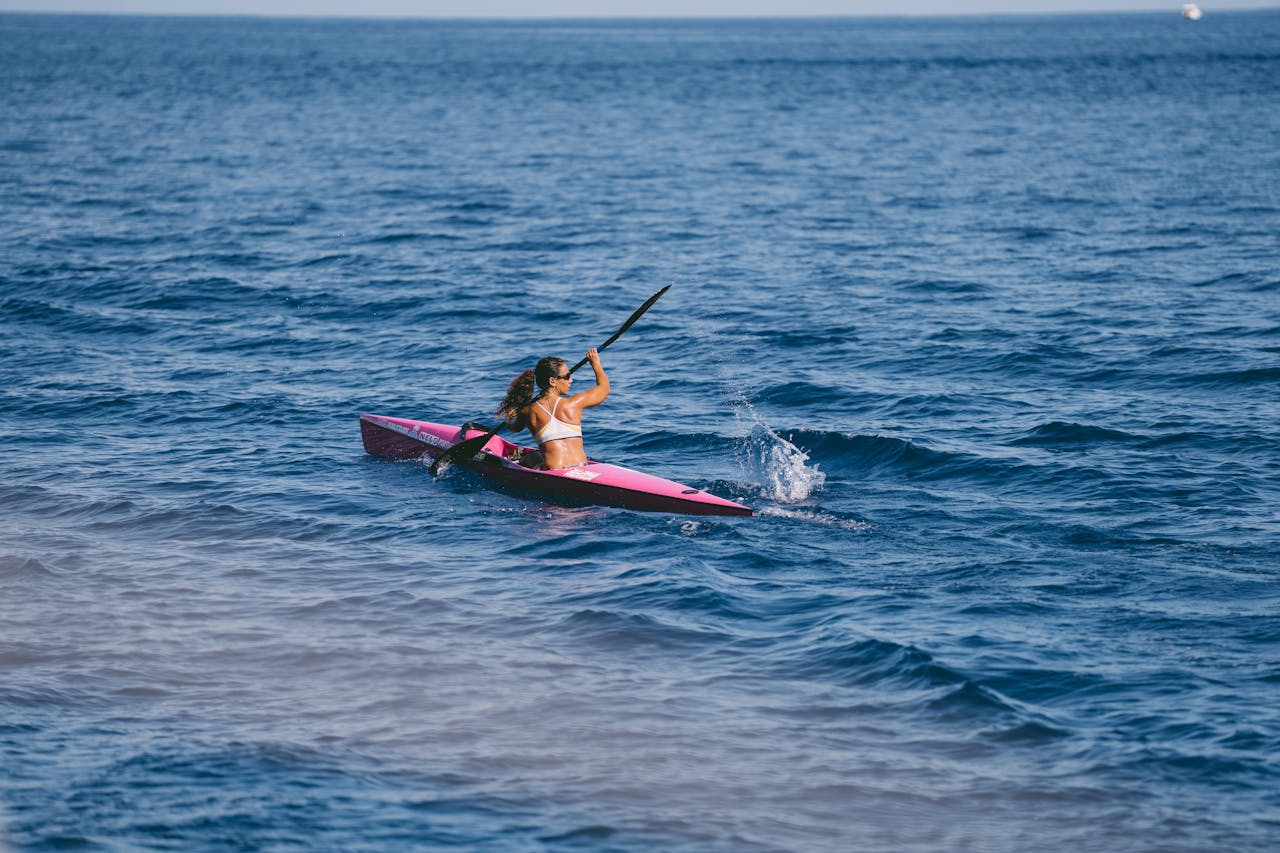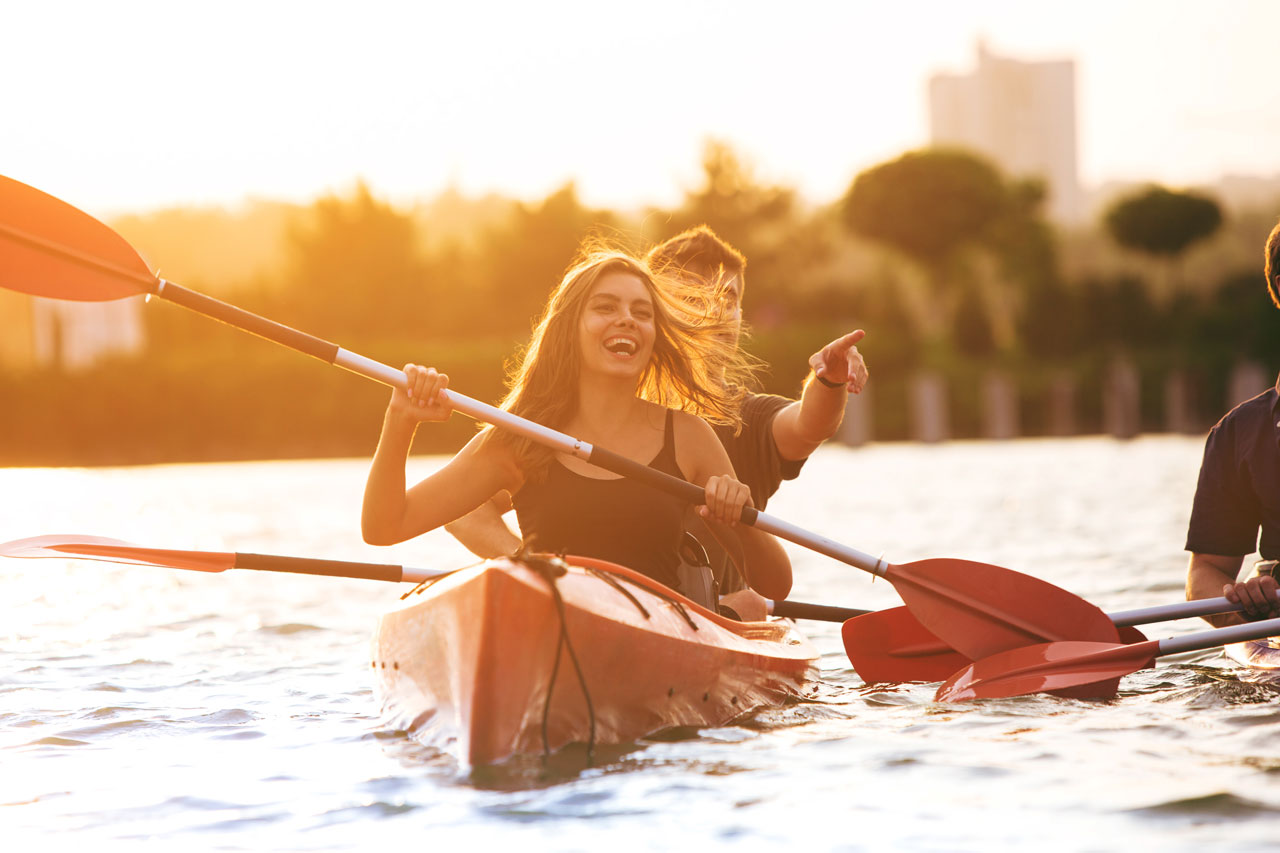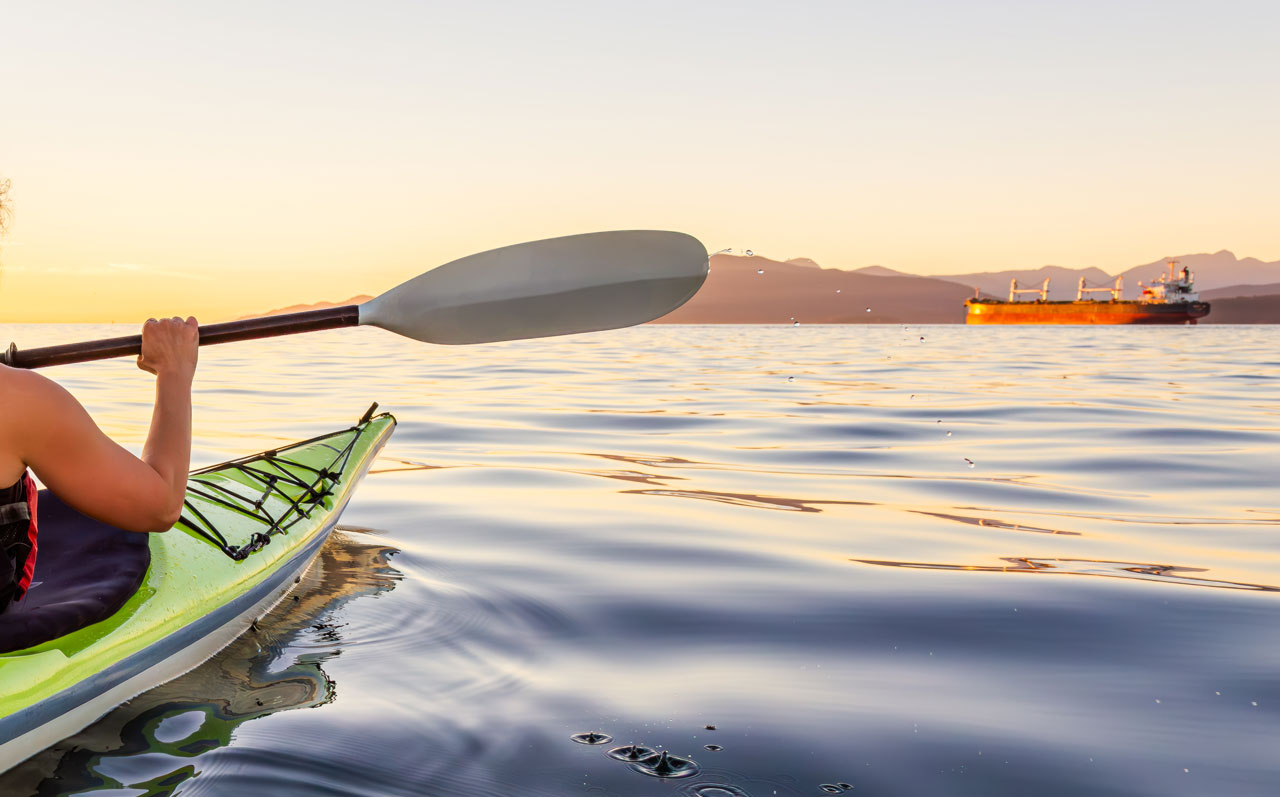Kayaking for Fitness: A Fun and Healthy Way to Get Active
Finding enjoyable activities that contribute to physical fitness is essential to pursuing a healthier lifestyle. Kayaking emerges as a standout option, offering a unique blend of exercise, enjoyment, and connection with nature. Whether you’re a fitness enthusiast or seeking a fresh approach to wellness, kayaking provides numerous health benefits while delivering a fun and invigorating experience. This blog explores how kayaking can enhance your fitness routine, improve overall well-being, and offer an enjoyable way to stay active.
Embracing Kayaking as a Fitness Activity
The Full-Body Workout
Kayaking is a very effective full-body workout that engages multiple muscle groups simultaneously. From your upper body to your core and legs, paddling through water activates muscles in a way that many other exercises do not. The repetitive motion of paddling builds strength in the shoulders, back, and arms, while the stabilizing movements required to maintain balance engage the core and legs. This comprehensive workout enhances muscle tone and improves cardiovascular fitness, contributing to a well-rounded exercise regimen.
Enhancing Cardiovascular Health
Regular kayaking sessions offer significant cardiovascular benefits. Your heart rate increases as you paddle, promoting better circulation and overall heart health. Sustained activity helps strengthen the heart muscle and improves lung capacity. Incorporating kayaking into your routine can boost cardiovascular endurance and enhance your overall fitness level. This exercise particularly benefits those looking to improve their stamina and cardiovascular efficiency without high-impact activities.
The Enjoyable Aspects of Kayaking
Combining Fun with Fitness
One of kayaking’s key advantages is its ability to make fitness enjoyable. Unlike traditional workouts that may feel repetitive or monotonous, kayaking offers a dynamic and engaging experience. The opportunity to explore scenic waterways, observe wildlife, and navigate different water conditions adds an element of adventure to your fitness routine. This enjoyable aspect of kayaking encourages consistency and makes exercising something to look forward to rather than a chore.
Stress Reduction and Mental Well-Being
Kayaking provides more than just physical benefits; it also contributes to mental well-being. Being on the water allows you to disconnect from daily stressors and immerse yourself in a tranquil environment. The rhythmic motion of paddling and the natural beauty of your surroundings promote relaxation and mental clarity. Engaging in kayaking regularly can help reduce stress, improve mood, and also provide a sense of accomplishment. Combining physical activity and nature immersion makes kayaking an excellent choice for enhancing physical and mental health.
Getting Started with Kayaking for Fitness
Choosing the Right Kayak and Gear
To maximize the benefits of kayaking, it’s essential to start with the right equipment. Pick a kayak that suits your skill level and intended use, whether for recreational paddling or more intense workouts. Invest in a quality paddle and ensure you have appropriate safety gear, including a life jacket. If you’re new to kayaking, consider renting gear or taking a lesson to familiarize yourself with the basics and ensure an enjoyable and safe experience.
Setting Fitness Goals
Incorporate kayaking into your fitness routine by setting achievable goals. Whether you’re improving endurance, building strength, or exploring new routes, having clear objectives helps you track progress and stay motivated. Start with shorter sessions and slowly increase the time and intensity of your trips as your fitness level improves. Kayaking’s flexibility allows you to tailor your workouts to your personal preferences and fitness goals.
Kayaking Destinations for Fitness Enthusiasts
Exploring Local Waterways
San Diego offers a variety of scenic waterways ideal for kayaking and fitness. From serene bays to picturesque rivers, these locations provide diverse environments for a well-rounded workout. Popular spots include Mission Bay, with its calm waters and scenic views, and La Jolla Cove, known for its stunning coastal scenery and marine life. Exploring different areas not only adds variety to your workouts but also enhances the overall kayaking experience.
Joining Kayaking Groups and Classes
Consider joining local kayaking groups or classes to enhance your fitness journey. Many communities offer organized kayaking events, fitness classes, and group outings. These opportunities provide a supportive environment for improving your skills, meeting fellow enthusiasts, and staying motivated. Participating in group activities can also add a social element to your fitness routine, making kayaking a more enjoyable and communal experience.
Benefits of Incorporating Kayaking into Your Routine
Improved Overall Fitness
Integrating kayaking into your fitness routine offers a range of health benefits, including enhanced cardiovascular health, increased muscle strength, and improved flexibility. The combination of aerobic and resistance training kayaking provides contributes to overall physical fitness and well-being. As a low-impact exercise, kayaking is suitable for individuals of any fitness level and age, making it an accessible option for many.
Connection with Nature
Kayaking allows you to connect with nature in a way that traditional workouts often do not. Paddling through natural environments provides a sense of tranquility and immersion that can enhance your overall well-being. The opportunity to observe wildlife, experience changing weather conditions, and explore scenic landscapes adds an enriching dimension to your fitness routine.
Conclusion
Kayaking is an excellent way to enhance your fitness while enjoying the great outdoors. Its full-body workout benefits, cardiovascular advantages, and enjoyable nature make it a compelling addition to any fitness routine. By embracing kayaking, you can achieve better health, reduce stress, and experience the thrill of exploring new waterways. Whether you’re an avid fitness enthusiast or looking to try a new activity, kayaking offers a unique and rewarding path to improved health and well-being.
Embrace the adventure of kayaking and discover how this exciting activity can elevate your fitness journey. With the perfect blend of exercise, enjoyment, and connection with nature, kayaking is a versatile and fulfilling choice for those seeking a holistic approach to health and wellness.
FAQs about Kayaking for Fitness
What fitness level is required to start kayaking?
Kayaking is suitable for people of all fitness levels. Beginners can start with shorter paddles and gradually increase the duration and intensity as they become more comfortable.
Is kayaking a high-impact activity?
No, kayaking is a low-impact activity that is gentle on the joints, making it suitable for people of all ages and fitness levels.
What equipment do I need to start kayaking?
To start kayaking, you’ll need a kayak, a paddle, and a life jacket. You may also want to consider additional accessories like a spray skirt, a dry bag, and sunscreen.
What muscles does kayaking work?
Kayaking is a full-body workout that engages multiple muscle groups, including your upper body, core, and legs.
Does kayaking help with weight loss?
Yes, kayaking can help with weight loss. It is a calorie-burning activity that can contribute to weight management when combined with a balanced diet.
Is kayaking good for improving cardiovascular health?
Yes, kayaking is excellent for improving cardiovascular health. It increases your heart rate and improves circulation.
Where can I learn how to kayak?
Many local marinas, parks, and outdoor recreation centers offer kayaking lessons and rentals. You can also find online resources and tutorials to learn the basics.
How often should I go kayaking to see results?
Consistency is key when incorporating kayaking into your fitness routine. Aim for at least 2-3 sessions per week to see noticeable results.
Can I kayak if I have back problems?
Kayaking can be a gentle activity for people with back problems, but it’s always recommended to consult with a healthcare professional before starting any new exercise regimen.




